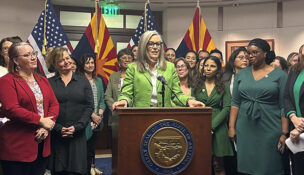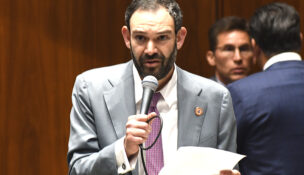Napolitano wants cuts, borrowing to balance budget
Arizona Capitol Reports Staff//January 3, 2008//[read_meter]
Napolitano wants cuts, borrowing to balance budget
Arizona Capitol Reports Staff//January 3, 2008//[read_meter]
Gov. Janet Napolitano has released long-awaited details to a plan she initially proposed in September to rectify a mounting deficit that some predict will reach $1 billion, proposing a combination...
No tags for this post.

















